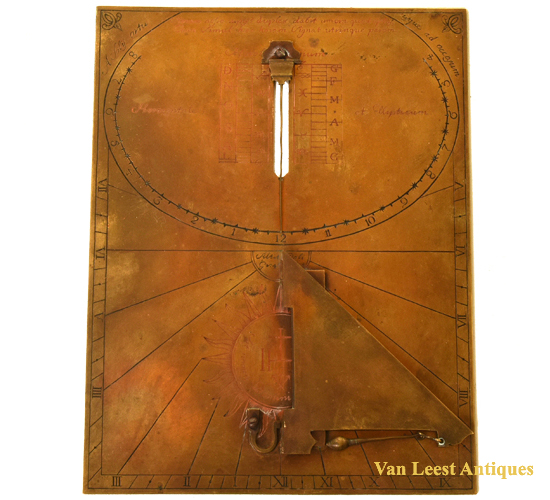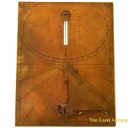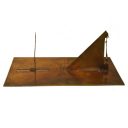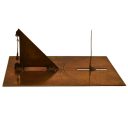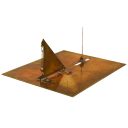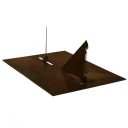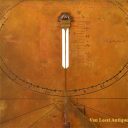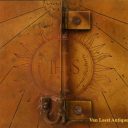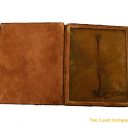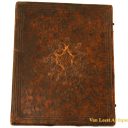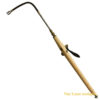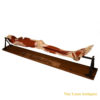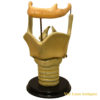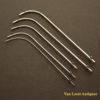Description
ITALIAN ANALEMMATIC PORTABLE SUNDIAL.
Circa first half 18th century, Brass, for a latitude of 46 degrees and 20 minutes (Northern Italy).
The rectangular dual dial plate measures 15 x 19cm. The plate is engraved around three edges with an horizontal hour scale, with subdivision per quarter, from V am to VII pm. There is on the other side a semi-elliptical hour scale divided from 4 am to 8 pm, with a subdivision per quarter as well, combined with a rectangular Zodiac calendar scale for the foldable pin gnomon,. The horizontal dial is engraved with radial hour lines and has a hinged gnomon with a brass plump for horizontal position. The Zodiac calendar scale is crossed by a straight meridian line where the vertical pin gnomon for the semi-elliptical hour scale can be set at the appropriate date position.
The area within the horizontal hour scale is engraved with the letters IHS and a cross and nails, enclosed in a sun burst. IHS is the Latin abbreviation for Jesus and was often used in Western Christian Churches.
Latin texts found on the dual dial plate are as follows:
A solis ortu usque ad occasum = From sunrise to sunset
Horam nosse cupis? Duplex dabit umbra quod optas Cum simil hac horam signat utrinque pavem = Wish you to know of the hour? The shadows gives a double result and indicates this hour together.
Horologium = Sundial
Horizontale et Ellipticum = Horizontal and Elliptical
Altitude Poli Gr. 46 min. 20 = Latitude 46 degrees and 20 minutes
Sit nomen Domini benedictum = The name of the master is blessed.
The underside is plain. Condition is fine in the original wooden case on the outside covered with leather with a pressed logo. The inner side with original red velvet, discolored by the test of time.
The single analemmatic dial was first described by de Vaulezard in 1644. The dual dial in this form is believed to be invented by Thomas Tuttel in 1698. The big advantage of this type is its independence of knowledge of magnetic north, and thus independence of the magnetic compass. Knowing the date, one places the vertical pin gnomon in the appropriate position, sets the dial on a horizontal surface, and rotates it until both sundials read the same time, which is the correct apparent solar time.
Literature: Mike Cowham, A Dial in your Poke , page 119-122
Look for shop information on www.vanleestantiques.com
Ask the Dealer
Dealer information
 Van Leest Antiques
Van Leest Antiques
Van Leest Antiques
Van Leest Antiques, based in Utrecht in the Netherlands, specialises in antique scientific and medical instruments. Their collection covers mainly scientific and medical antique instruments: barometers, globes and planataria, nautical instruments, anatomical models, and pharmacy items. Toon Van Leest travels regularly in Europe and visits trade fairs, auctions, and antique dealers to collect stock and to find pieces to fulfil his clients' unusual requests.
As well as being an avid antique collector and dealer, Toon Van Leest is also a dentist. He believes that antiques are a stable investment, not reliant on trends or fashion, and have truly lasting value. Above all, he says, antiques are timeless and never lose their beauty.


